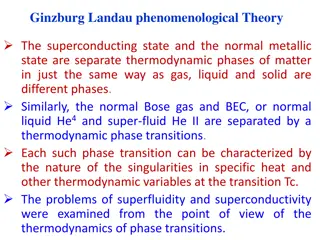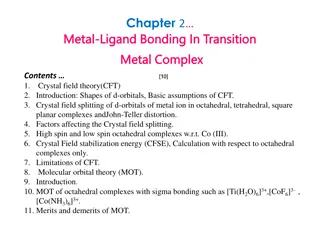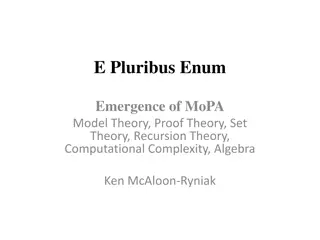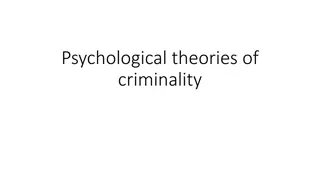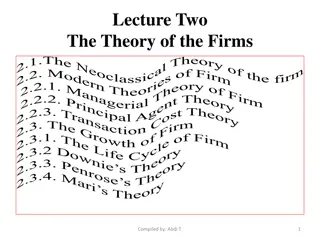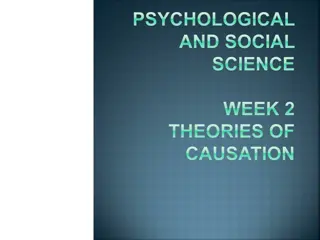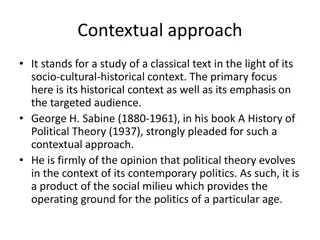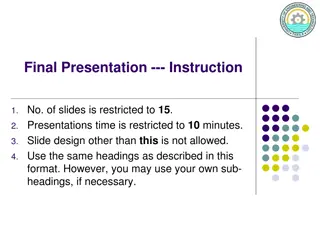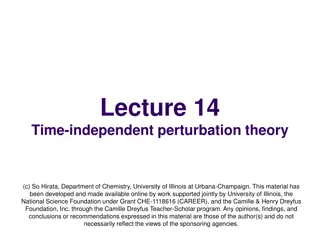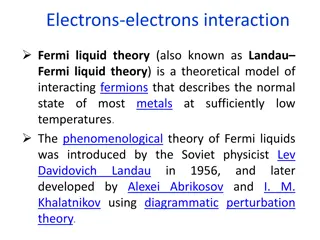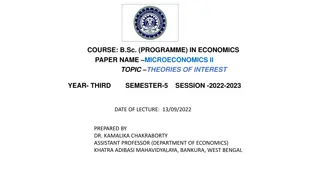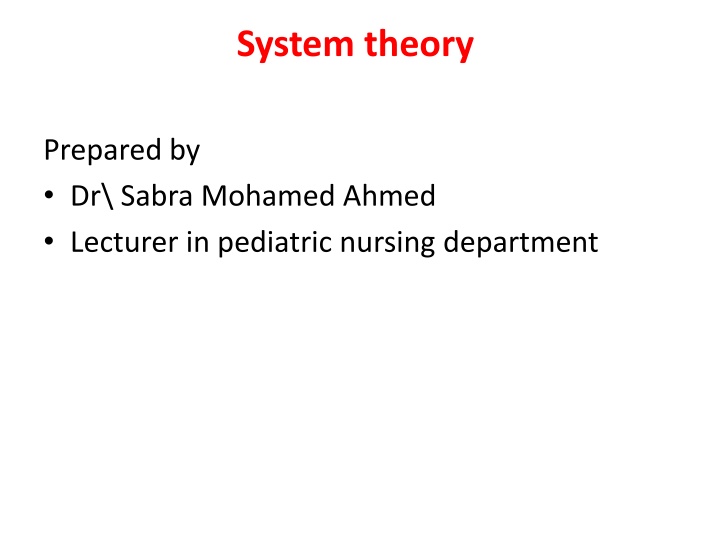
System Theory in Management
Explore the concept of system theory in management, including its definition, characteristics, advantages, and limitations. Learn how system theory provides a framework for analyzing and improving organizational structures and processes.
Download Presentation

Please find below an Image/Link to download the presentation.
The content on the website is provided AS IS for your information and personal use only. It may not be sold, licensed, or shared on other websites without obtaining consent from the author. If you encounter any issues during the download, it is possible that the publisher has removed the file from their server.
You are allowed to download the files provided on this website for personal or commercial use, subject to the condition that they are used lawfully. All files are the property of their respective owners.
The content on the website is provided AS IS for your information and personal use only. It may not be sold, licensed, or shared on other websites without obtaining consent from the author.
E N D
Presentation Transcript
System theory Prepared by Dr\ Sabra Mohamed Ahmed Lecturer in pediatric nursing department
Objectives:- On successful completion of the completion of the lecture the student will be able to :- Define the system theory Description of general system theory. Enumerate the characteristics of the system. List advantages and disadvantages of the system. List function of the system. Enumerate classic system element mention typed system List limitation of system theory.
Out line Definition of system theory Description of general system theory. Advantages and disadvantages of the system. Function of the system. classic system element mention typed system Limitation of system theory. References
Introduction:- Several management theories have evolved over a period of time. System theory is one of important theory in management. The lecture offer are understanding the system theory in related to management theory was proposed in the 1940s by the biologist (Ludwing von) was reacting against reduction and attempting to revive the unity General nursing
Definition of system theory It defined as an effort to identify, in logical fashion, the interaction of various internal and external elements organization operation. that aiming on an
Description of general system theory System theory provided approach to understanding, analyzing and thinking about organizations. System theory views an organization as an organism made up numerous part (subsystems) that work together in harmony for the large system to department, work group, business unit, facilities and individual employees can be viewed as subsystems of the organization. System composed of structure, process and out com to evaluate success in achieving nursing out come. It is necessary to device mechanisms for feed back of results and the adjustment of resources, process and structure where necessary to better goal .
Characteristics of system Communication mechanism must be in place for organizational system to exchanged relevant information with it is environment Provide for the flow of the information among subsystems. System:- Set interrelated part that turn input into out puts through processing Subsystems:-do the processing Super system:-are other systems in the environment that the system is boundaries. System is goal oriented and engages in feedback in order to meet the goal of organization. System theory focuses in the arrangement and relation between the part that connect them into a whole. The mutual interaction between the parts make the whole bigger than the parts them selves.
Advantages of system Highlight input and output relationships. Clarifies process steps and channels Identifies optimum control point. Facilities broad scales Multidirectional change.
Disadvantages of system:- Centralize in decision making. Observed difference disagreement Depersonalizes human interactions.
Basic element of the system Input Maintained input (energic imports that sustain system). Production input (energic imports which are processed to valid a productive out come . Work done in the resource used to produced product. Out put Exit or change exciting the system System return the product to the environment . Provides a series of mechanical or chemical operation in something in order to change or preserve it . Feed back Information about reaction to a product . Uses as basic for environment. Can be Positive feedback :-move from status Negative feedback :-return to status
Types of a system Natural and man- mad system:- Natural system Is one that growth out of natural processes, remain stable over long period of time(example geological changes occurring over billions of years). Man-made system is one that is artificially by a human to accomplish a desired end (example nurse recruitment system, orientation program for new employees, nurse staffing program, and quality improvement program are all man-made system.
Continue Types of a system Static and dynamic system:- A static system is not one that constitutes steady state in which neither system elements nor the total system changes in relation to environment A dynamic system: - is one that continuously alters and is altered by it is environment.
Continue Types of a system Deterministic and probabilistic system A deterministic system:- is one in which the part interact in a predictable way, once the state of the system is known. If the system controller changes one input element in a deterministic system it is possible to accurately predict output of the changed system. Probabilistic system: - is one in which outcome of system performance is somewhat uncertain, so it is impossible to make a precise prediction about performance of system component or total system output.
Continue Types of a system Open and closed system Open system: - Continuously interact with the environment, There are exchanges between materials. Energies and information with the environment. Closed system:- Theoretical system that do not interact with the environment. Not influenced by surrounding.
Continue Types of a system Centralized and decentralized system A centralized system: - is one in which a single subsystem plays so dominant a role that it minimizes the importance of other subsystem.in some hospital and clinics the medical subsystem is given highest status and central position in the total organization. Decentralized system:-is one in which all subsystems are of equal importance
Continue Types of a system External and internal systems:- An external system:- is a sociotechnical system consisting of behaviors that are determined by formal organizational structure and function.(required subsystem_. An internal system:- consists of behaviors that develop from interaction between formal job requirement and individual needs.
Continue Types of a system Purposive and purposeful systems:- A purposive system:- is a multi- goal seeking in which the several goals have a common property A purposeful system:- is one that can produce the same outcomes in different way in same internal and external state
Strengths of system theory:- Deal with complexity. Take a holistic view. Can easily manage change through interaction with the environment. Utilize feedback- easy to improve. Recognizes importance of super systems
Limitation in system theory in management:- Not prescriptive management theory. Does not specify tool or technique for practicing manager. Too abstract to apply in practical problem. Does not adequately social in equalities and their causes address power and
References Yoder-Wise, P.S. (2011). Leading and Managing in Nursing (5th ed.). St. Louis: Mosby. Sullivan, E.J. & Decker, P.J. (1992). Effective Leadership and Management in Nursing (3rd ed.). Redwood: Addison-Wesley. Petula, S. (2005). Can Applying Systems Theory Improve Quality in Health Systems? National Association for Healthcare Quality. www.nahq.org/uploads/JHQQNol.pdf Savigny, D. D., & Adam, T. (2009). Systems Thinking for Health Systems Strengthening. World Health Organization


